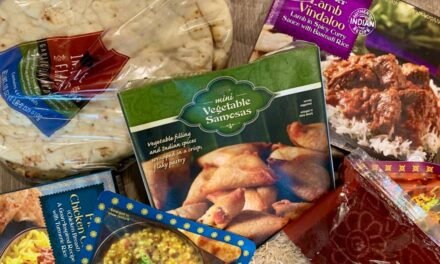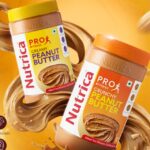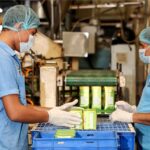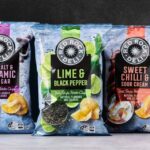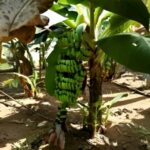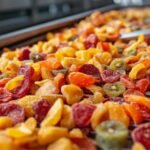Guava is one of the important tropical fruit and is highly nutritious. However, they are seasonal in nature and can be stored fresh for only less than a week. Hence, the processing of guava fruit is essential. Hence, S. Kanchana, P.Vennila, R. Kailappan, G.S.V. Raghavan and Venkatesh Sosle made an attempt to study the biochemical changes in the sun-dried guava pulp obtained by varying bed thickness.
Table of Contents
Guava, a highly nutritious tropical fruit, is rich in vitamin C, β-carotene, and fiber. However, its seasonal nature and short shelf life lead to significant post-harvest losses. Sun-drying, an eco-friendly and cost-effective preservation method, helps retain essential nutrients while extending storage life. This study explores the biochemical changes in sun-dried guava pulp, highlighting its potential to reduce waste, enhance availability, and create new opportunities for food processing industries.
Guava is one of the important tropical fruit and is highly nutritious. It contains an appreciable quantity of vitamin C, β-carotene and fibre. According to USDA Nutrient Database for standard reference, release 12 (1998), guava is the fruit having the highest average vitamin C content of 165 mg per 100 g of fruit.
Some pink guava cultivars grown for canning industry are however said to have an astonishing 400 mg per 100 g of fruit. In India, guava is grown over an area of 0.19 million hectares and recorded production of 1.68 million tonnes. It ranks fourth with respect to area and production. Guava fruits have a moisture content of 75-85 percent at the time of harvest. They are seasonal in nature and can be stored fresh for only less than a week. Hence, the processing of guava fruit is essential.
Dehydration is a preservation technique, in which the moisture content is reduced to a level at which the product is chemically stable (Mazza, 1983). Moisture may be removed from foods by a number of methods. The terms used in connection with the drying of foods are rather in exact. A sun-dried food has had the moisture removed by exposure to the sun’s rays without any artificially produced heat and without controlling temperature, relative humidity or air velocity (Frazier and Westoff, 1996). In tropical countries, dehydration of fruits and vegetables by sun drying is a popular practice due to its low cost, simple and environment-friendly technique.
Holdsworth (1986) reported the successful drying of fruits and vegetables. In tropical countries, fruits and vegetables containing certain vitamins like C and heat unstable constituents can easily be dried under the sun directly without much quality loss and at low cost as compared to conventional driers. According to Hawlader, et al. (1991), conventional air drying is expensive for high moisture fruits. Prakash, et al., (2004), Sagar et al., (1997) and Jayaraman, et al., (1991) sun-dried the products and reported.
Longer shelf-life, product diversity, and substantial volume reduction are the reasons for the popularity of dried fruits. This could be expanded further with improvements in product quality and newer food preparations. Hence, in the present study, an attempt was made to study the biochemical changes in the sun dried guava pulp obtained by varying bed thickness from 2 to 9mm.
The fully matured fruits of pink guava variety Lalit has widely grown in Tamil Nadu, India was pulped using a fruit mill and passed through a finisher having a sieve of 0.2 mm hole size, heated in a counter-current heat exchanger for ninety seconds at 85o C, sealed in an epoxy coated can retorted for ten minutes, then cooled to room temperature immediately, wiped and stored. The canned pulp was used for the present study.
Sun Drying of Guava Pulp
The guava pulp was spread in different bed thickness viz., 2, 3, 4, 5, 6, 7, 8 and 9mm and dried under the sun till it reached the equilibrium moisture content (till the sample recorded same moisture content for two consecutive readings taken at hourly interval, approximately the moisture content value was 11.0 to 12.0, db). The dried pulp was used for quality analysis.
Quality Analysis of Guava Pulp
The following analyses were carried out in order to study the quality of guava pulp.
Biochemical analysis: The sugar content of the sample was determined by the Shaffer Somogyi micro method as described by McDonald and Foley (1960). Total acidity was determined as per the method described by Ranganna (1995). Ascorbic acid content was estimated by following the procedure given by Mahadevan and Sridhar (1986). The water activity of the fresh and sun-dried samples of guava pulp was measured by using water activity meter (Aqua lab, USA) with a reference room temperature of 23.40 C. The colour measurement for fresh and sun-dried samples of guava pulp was done using a Tristimulus calorimeter (Minolta CR-300 series chromameter) in terms of “L”, “a”, and “b” values. The equipment was calibrated against a white Minolta calibration plate – CR-300, 20 Observer. The parameters “L”, “a”, “b” of the samples was read at three different places and the average was taken for discussion.
Rehydration studies: Guava pulp of different bed thicknesses dried under the sun was studied for rehydration characteristics as suggested by USDA (United States Bureau of Agricultural and Industrial Chemistry, 1944). A sample (one gram) of the dried guava pulp was weighed (initial weight) into 100ml beaker containing 30ml of distilled water and boiled for 5min. After rehydration, me sample was weighed (final weight). The rehydration ratio was obtained by dividing the rehydrated weight by the initial weight.
Statistical Analysis: All the observations were reported as means of three replications. Two-way analysis of variance (ANOVA) and the least significant difference (LSD) at p < 0.05 were calculated using AGRES package to determine the significance difference in fresh with the dried samples.
Physico-chemical Characteristics of Fresh Guava Pulp

The physico-chemical characteristics of fresh guava pulp was studied for conducting the drying studies. The results are presented in Table 1. The extracted pulp was viscous, pink in colour with strong guava flavour and sweet taste. The pulp contained 85.0 percent, 9.80g/100g, 0.86g/100g and 785.8mg/100g of moisture, reducing sugar, acidity and ascorbic acid, respectively. The water activity of the fresh guava pulp was 0.91 and the colour values were L=42.43, a=8.26, and b=9.97.
Biochemical Changes of Sun-dried Guava Pulp
The reducing sugar, acidity, ascorbic acid, water activity and the colour values of sun-dried guava pulp dried in different bed thickness was analysed and the results are tabulated in Table 2.

Reducing Sugars
From Table 2, it is noted that the reducing sugar content of the guava pulp dried at different bed thicknesses was ranged from 32.55 to 37.52 g/100g dwb. As the bed thickness increased, the reducing sugar content was also increased. The content of reducing sugar was lower in the bed of 2mm as compared to 9mm thick. The increase in reducing sugar content might be due to the conversion of total sugar into simple sugars and also the concentration of guava pulp during the drying process. Statistical analysis of the data showed a highly significant difference in the reducing sugar content of dried guava pulp between the bed thicknesses. Gallali et al. (2000) analysed the reducing sugar content of naturally dried fruits and reported.
Acidity
The acid content of the sun-dried guava samples were ranged between 3.20 and 3.99 percent for the bed thickness of 2 to 9mm. Similar to reducing sugar, the acid content was also increased as the bed thickness increased. The higher percent of acid was due to the concentration of guava pulp during the drying process. A significant difference in the acid content of sun-dried guava samples was observed between the bed thicknesses. Gallali,et.al.(2000) analysed the acid content of sun-dried grapes, figs and tomatoes and reported increased values.
Ascorbic Acid
The content of ascorbic acid present in the guava pulp was reduced during drying. The ascorbic acid content of sun-dried samples dried with different bed thicknesses (2 to 9 mm) showed a variation in values ranging between 651 and 742 mg / 100g. The study also revealed that the ascorbic acid content of dried guava pulp increased with an increase in bed thickness (Fig. 1). The retention of ascorbic acid was greater in the bed thickness between 6 and 9 mm. Statistical analysis of the data revealed a highly significant difference in the ascorbic acid content of the dried guava pulp between the bed thicknesses.
Gould (1983) stated that the temperature at which tomato products were heated in the presence of air was the most important factor affecting the rate of ascorbic acid. Giovanelli et al. (2002) reported that the fresh tomato pulp which contained 3300±100mg/kg (dm) of ascorbic acid was decreased to 400±60mg/kg (dm) after drying in the cabinet drier. Toor and Savage (2005) studied the effect of semi-drying on the antioxidant components of tomatoes. They reported that the ascorbic acid content of fresh tomato was 296±12.6 which got reduced to 246± 14.2mg/100g (dm) during drying in forced air drier.

Water Activity
Water activity directly reflects the moisture content of the dried samples. The shelf life of the product is easily determined by observing the water activity. The reduction in water activity was noticed in all the samples dried in different bed thicknesses. As the bed thickness increased the water activity also increased. The bed thickness of 2mm recorded a water activity value of 0.423 and in 9mm it was 0.491 (Fig. 2). Statistical analysis of the data showed a highly significant difference in the water activity between the bed thicknesses of sun-dried guava pulp. Van Arsdel, et.al. (1973) reported that the water activity of naturally dried apple was 0.60 at 27 percent moisture level. Kaptan and Seylam (1996) found that the solar-dried apple contained 0.38 aw. The water activity of mechanically dried cranberries at a moisture content of 14 to 18 percent was ranged between 0.45 and 0.62 (www. decascranberry.com). Similar observations in water activity were noted in the present study.
Colour Values
The colour value of the sun-dried guava pulp samples was measured by chromameter and the values were expressed as L, a, b and are given in Table 2. From the Table, it is observed that as the bed thickness increased the intensity of the darkness also increased. The L, a and b values of 2mm bed thickness in the sun-dried samples were 44.57, 8.34 and 10.01. The retention of colour might be due to the shorter exposure of the samples to the radiation. In 9mm bed, the L, a and b values were 52.21, 11.83 and 13.42. When statistically analysed the colour values showed a significant effect on the bed thickness and method of drying. Venkatachalapathy and Raghavan (2000) observed that a and b values of fresh strawberry slices and freeze-dried strawberry puree were 1.21 and 2.13, respectively. They also reported that freeze-drying allowed the retention or prevented the modification of compounds involved in pigmentation while at the same time concentrating them due to dehydration. This leads to dense colour. Similar results were observed in the present study.
Rehydration Studies of Sun-dried Samples
It was observed that the sun-dried samples of different bed thicknesses did not show any variation in the rehydration values. The rehydration ratio of sun-dried samples was found to be 1:3. Venkatachalapathy and Raghavan (2000) studied the rehydration ratio of conventional dried, microwave dried and freeze-dried strawberry slices. The rehydration ratio was found to be 2.91, 2.82 and 3.80g/g, respectively for conventional, microwave and freeze-dried samples.
The rehydration ratio of solar dried and fluidized bed dried carrot was found to be 4.70 and 5.62 (Prakash et al., 2004). Similar trend was noted in the present study.
Conclusions
From the study, it is concluded that the guava pulp of different bed thicknesses dried in sun recorded lower values of ascorbic acid and higher values of reducing sugar and acidity compared to fresh guava pulp. The water activity of the sun-dried samples was found to be within the safer limit. The studies on colour of the dried guava samples in terms of Hunter Lab L, a and b values showed clearly that an increase in bed thickness changed the intensity of the colour from flesh pink to reddish-brown. The rehydration property of sun-dried guava pulp is found to be 1: 3.
Acknowledgment
The authors S. Kanchana, P.Vennila and R. Kailappan are grateful to the McGill Professor Dr. G. S. V. Raghavan for providing research grant under Canadian International Development Agency and also to the Vice-Chancellor, Tamil Nadu Agricultural University for providing an opportunity to work at McGill University.

References
- Frazier, W.C. and D.C. Westoff. 1996. Preservation by drying. Food microbiology 4th edn. Tata McGraw-Hill, New Delhi. P: 134-135.
- Gallali, M.Y.Y.S. Abujnah and F.K. Bannani. 2000. Preservation of fruits and vegetables using solar drier: a comparative study of natural and solar drying. III. Chemical analysis and sensory evaluation data of the dried samples (grapes, figs, tomatoes and onions). Renewable Energy, 19(l-2). PP. 203-212.
- Giovanelli, b.Zanoni, V.Lavelli and R.Nani. 2002. Water sorption, drying and antioxidant properties of dried tomato products. Journal of Food Engineering, 52 (2) PP. 135-141.
- Gould, WA. 1983. Tomato production, processing and quality evaluation (2nd edn.pp.xii). Westport, CT : The AVI Publishing Company, Inc.
- Hawlader, M.N.A., M.S.Uddin,J.C.Ho and A.B.W. Teng. 1991. Drying Characteristics of Tomatoes. Journal of Food Engineering, 14 (3).PP. 259-268.
- Holdsworth, S.D. 1986. Advances in the dehydration of fruits and vegetables. In: Concentration and Drying of Food, Elsevier Applied Science Publishers, London
- PP.293-303. Jayaraman, K.S.,D.K.D., Gupta and N. Baburao.1991. Quality characteristics of some vegetables dried by direct and indirect sun drying. Indian Food Packer. PP. 16-23.
- Kaptan, H. and A.Seylam.l996.Solar drying of selected fruits and vegetables. Unpublished, TUBITAK-MRC. FSTRI. Mahadevan, A and R.Sridhar. l986. Methods in physiological plant pathology. 3rd edn.Sivakami publications. Madras. P. 80.
- Mazza,G.1983. Dehydration of carrot-effects of pre-drying treatments on moisture transport and product quality. Journal of Food Technology. 18. PP. 113-123.
- McDonald, E.J. and Foley ,B.Y. 1960.Journal of Assoc. Offic. Agricultural Chemistry. 43. P.645.
- Prakesh, S, Jha, S.K, and Datta, N.2004. Performance evaluation of blanched carrots dried by three different driers, Journal of Food Engineering, 62 (4), PP.305-313.
- Ranganna,S.1995. Manual of analysis of fruits and vegetable products. Tata McGraw Hill Publishing Co., Ltd., New Delhi. P. 1 -2.
- Sagar, V.R, S.B. Maini, R. Kumar and N. Pal. 1997. Studies on sun drying of carrots. Vegetable Science. 24( 1) PP. 61-66.
- Toor, R.K. and G.P. Savage. 2005. Effect of semi-drying on the antioxidant components of tomatoes. Food Chemistry. PP.90-97.
- United States Bureau of Agricultural and Industrial Chemistry. 1944. Vegetables and fruit dehydration (p.540) USDA Misc. Publ.
- VanArsdel,B.S., M.J.Copley and A.I.Morgan.l973. Food Dehydration. Second edition. Vol.2. Practices and application. The AVI Publishing company, Inc., Westport. Connecticut.
- Venkatachalapathy, K and G.S.V. Raghavan 2000. Microwave drying of whole, sliced and pureed strawberries. Agricultural Engineering Journal, 9(l). PP. 29-39.
Have a news or topic to share with industry? Write to us editorial@pfionline.com


